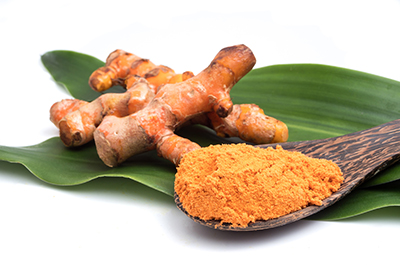Arthritis: Comprehensive Integrative Management
Arthritis refers to any number of conditions causing joint pain, swelling, and stiffness resulting in disability. According to the Public Health Agency of Canada, arthritis affects 16% of Canadians over the age of 15.[1] There are several different types of “arthrides,” including osteoarthritis (“wear-and-tear” arthritis), rheumatoid and other types of autoimmune arthritis, juvenile arthritis, systemic lupus erythematosus (SLE), and gout. The pain and joint damage associated with arthritis is caused by the presence of uncontrolled inflammation and degeneration of the cartilage. Therefore, the goal of treatment is to reduce inflammation and promote joint healing.
The Role of Diet
Dietary factors can be a source of inflammatory triggers. Alterations in digestive function, specifically the development of “leaky gut,” have been identified in a number of chronic inflammatory conditions including fibromyalgia, juvenile arthritis, lupus, and ankylosing spondylitis (AS).[2][3][4] When gut-barrier function is altered, food proteins that are normally held in the intestinal lumen to be digested prior to their absorption instead go into the blood. These nondigested macromolecules are then recognized by the body as foreign elements, triggering an immune reaction and the development of immune hyperreactivity. Studies of patients with fibromyalgia suggest higher rates of gluten intolerance,[5] and studies of patients with rheumatoid arthritis show increased levels of food-specific antibodies present in their intestinal fluid.[6] The involved foods included proteins from cow’s milk (alpha-lactalbumin, beta-lactoglobulin, casein), cereals, hen’s egg (ovalbumin), cod fish, and pork meat.[6]
Dietary avoidance of proteins that drive this intraintestinal inflammation prove very useful for alleviating symptoms of arthritis and other autoimmune diseases. This is the basis for recommendation of gluten and dairy-free diets as a treatment in arthritis.
 Supplements May Be Beneficial
Supplements May Be Beneficial
A four-pronged approach is described for achieving maximal clinical improvement among patients with various types of arthritis. The approach calls upon natural health products that distinctly work to relieve pain and inflammation. When combined, the collective impact to joint pain can be profound. The four components of this method are the immune modulation, the anti-inflammatory action, the improvement of joint structure integrity, and the enzymatic approach.
Two key interventions that achieve the outcome of immune modulation are probiotics and vitamin D. Among their wide array of important positive health outcomes, both probiotics [7][8][9] and vitamin D [10][11][12] have been shown to improve pain and other parameters among individuals with arthritis. Vitamin D and probiotics earn the title “immune modulatory” because they deliver very unique clinical impact. They act as “immune-adaptogens,” meaning that they alleviate immunity processes that drive autoimmune disease, yet they simultaneously ramp up the anti-infectious immunity response. Vitamin D and probiotics improve symptoms of arthritis while reducing the likelihood of getting a cold or flu, and if a cold or flu occurs, they reduce its severity and duration.
Many natural health products have been shown to serve as anti-inflammatory. Preferred considerations for management of arthritic pain include omega-3,[13][14][15] boswellia,[16] and curcumin.[17] Physiologically, cells of the immune system use arachidonic acid to create cytokines and eicosanoids—hormone-like molecules of the immune system—which are powerful drivers of inflammation.
 Arachidonic acid is acted upon by one of two enzymes—cyclooxygenase or lipoxygenase—which condition the transformation of arachidonic acid in highly inflammatory byproducts. Boswellia and curcumin work by inhibiting the two enzymes. As for omega-3s, they work by replacing the substrate of the cellular membrane, which results in the transit of some EPA and DHA through the two enzymes, resulting in anti-inflammatory products as opposed to proinflammatory.
Arachidonic acid is acted upon by one of two enzymes—cyclooxygenase or lipoxygenase—which condition the transformation of arachidonic acid in highly inflammatory byproducts. Boswellia and curcumin work by inhibiting the two enzymes. As for omega-3s, they work by replacing the substrate of the cellular membrane, which results in the transit of some EPA and DHA through the two enzymes, resulting in anti-inflammatory products as opposed to proinflammatory.
For the structural aspect of this integrative approach, glucosamine and chondroitin help to strengthen joint tissues. They have been very thoroughly researched in humans. They have been shown to improve pain,[18] reduce circulating markers of inflammation,[19] and actually slow progression or reverse damage caused by arthritis to joint space.[20]
The final component of this four-pronged approach is enzymatic. A very large body of controlled human studies has shown that oral supplementation with digestive enzymes—in this case proteolytic—achieves important benefits for pain control.[21][22][23]
Discussion
Given how widespread arthritis is, how debilitating arthritic pain can be, and unwanted side effects delivered by conventional treatments, it is not surprising that diet and natural health products have received a lot of attention in this area. If diet and natural health products can individually bring moderate benefits to individuals suffering from arthritis, their combination in a comprehensive approach can deliver an important magnitude of benefits.
Overview of Comprehensive Approach for Arthritis Management
Intervention |
Basis |
|
Strict gluten-free and dairy-free diet |
Eliminate dietary proteins reproducibly implicated in causing/progressing leaky gut |
Four-Pronged Supplemental Approach |
|
|
Probiotics, vitamin D |
Immune modulatory |
|
Fish oil, boswellia, curcumin |
Anti-inflammatory |
|
Glucosamine, chondroitin |
Structural |
|
Proteolytic digestive enzymes |
Enzymatic |
References
- Public Health Agency of Canada. Life with Arthritis in Canada: A personal and public health challenge. Chapter One: What is arthritis and how common is it? http://www.phac-aspc.gc.ca/cd-mc/arthritis-arthrite/lwaic-vaaac-10/3-eng.php · Updated 2011-11-10.
- Goebel, A., S. Buhner, R. Schedel, H. Lochs, and G. Sprotte. “Altered intestinal permeability in patients with primary fibromyalgia and in patients with complex regional pain syndrome.” Rheumatology, Vol. 47, No. 8 (2008): 1223–1227.
- Picco, P., M. Gattorno, N. Marchese, S. Vignola, M.P. Sormani, A. Barabino, and A. Buoncompagni. “Increased gut permeability in juvenile chronic arthritides. A multivariate analysis of the diagnostic parameters.” Clinical and Experimental Rheumatology, Vol. 18, No. 6 (2000): 773–778.
- Fresko, I., V. Hamuryudan, M. Demir, N. Hizli, H. Sayman, M. Melikoğlu, R. Tunç, et al. “Intestinal permeability in Behçet’s syndrome.” Annals of the Rheumatic Diseases, Vol. 60, No. 1 (2001): 65–66.
- Tovoli, F., L. Giampaolo, G. Caio, M. Monti, M. Piscaglia, M. Frisoni, L. Bolondi, and U. Volta. “Fibromyalgia and coeliac disease: a media hype or an emerging clinical problem?” Clinical and Experimental Rheumatology, Vol. 31, No. 6 Suppl. 79 (2013): S50–S52.
- Hvatum, M., L. Kanerud, R. Hällgren, and P. Brandtzaeg. “The gut-joint axis: Cross reactive food antibodies in rheumatoid arthritis.” Gut, Vol. 55, No. 9 (2006): 1240–1247.
- Kim, J., S.H. Choi, Y.J. Kim, H.J. Jeong, J.S. Ryu, H.J. Lee, T.W. Kim, et al. “Clinical effect of IRT-5 probiotics on immune modulation of autoimmunity or alloimmunity in the eye.” Nutrients, Vol. 9, No. 11 (2017): E1166.
- Zamani, B., H.R. Golkar, S. Farshbaf, M. Emadi-Baygi, M. Tajabadi-Ebrahimi, P. Jafari, R. Akhavan, et al. “Clinical and metabolic response to probiotic supplementation in patients with rheumatoid arthritis: a randomized, double-blind, placebo-controlled trial.” International Journal of Rheumatic Diseases, Vol. 19, No. 9 (2016): 869–879.
- Vaghef-Mehrabany, E., B. Alipour, A. Homayouni-Rad, S.K. Sharif, M. Asghari-Jafarabadi, and S. Zavvari. “Probiotic supplementation improves inflammatory status in patients with rheumatoid arthritis.” Nutrition, Vol. 30, No. 4 (2014): 430–435.
- Lin, J., J. Liu, M.L. Davies, and W. Chen. “Serum vitamin D level and rheumatoid arthritis disease activity: Review and meta-analysis.” PLoS One, Vol. 11, No. 1 (2016): e0146351.
- Herly, M., K. Stengaard-Pedersen, P. Vestergaard, M. Østergaard, P. Junker, M.L. Hetland, K. Hørslev-Petersen, and T. Ellingsen. “The D-vitamin metabolite 1,25(OH)2 D in serum is associated with disease activity and anti-citrullinated protein antibodies in active and treatment naïve, early rheumatoid arthritis patients.” Scandinavian Journal of Immunology, Vol. 88, No. 3 (2018): e12704.
- Zheng, S., X. Jin, F. Cicuttini, X. Wang, Z. Zhu, A. Wluka, W. Han, et al. “Maintaining vitamin D sufficiency is associated with improved structural and symptomatic outcomes in knee osteoarthritis.” The American Journal of Medicine, Vol. 130, No. 10 (2017): 1211–1218.
- Goldberg, R.J., and J. Katz. “A meta-analysis of the analgesic effects of omega-3 polyunsaturated fatty acid supplementation for inflammatory joint pain.” Pain, Vol. 129, No. 1–2 (2007): 210–223.
- Li, K., T. Huang, J. Zheng, K. Wu, and D. Li. “Effect of marine-derived n-3 polyunsaturated fatty acids on C-reactive protein, interleukin 6 and tumor necrosis factor α: A meta-analysis.” PLoS One, Vol. 9, No. 2 (2014): e88103.
- Miles, E.A., and P.C. Calder. “Influence of marine n-3 polyunsaturated fatty acids on immune function and a systematic review of their effects on clinical outcomes in rheumatoid arthritis.” The British Journal of Nutrition, Vol. 107, Suppl. 2 (2012): S171–S184.
- Sengupta, K., A.V. Krishnaraju, A.A. Vishal, A. Mishra, G. Trimurtulu, K.V. Sarma, S.K. Raychaudhuri, and S.P. Raychaudhuri. “Comparative efficacy and tolerability of 5-Loxin® and Aflapin® against osteoarthritis of the knee: A double blind, randomized, placebo controlled clinical study.” International Journal of Medical Sciences, Vol. 7, No. 6 (2010): 366–377.
- Belcaro, G., M.R. Cesarone, M. Dugall, L. Pellegrini, A. Ledda, M.G. Grossi, S. Togni, and G. Appendino. “Efficacy and safety of Meriva®, a curcumin-phosphatidylcholine complex, during extended administration in osteoarthritis patients.” Alternative Medicine Review, Vol. 15, No. 4 (2010): 337–344.
- Zeng, C, J. Wei, H. Li, Y.L. Wang, D.X. Xie, T. Yang, S.G. Gao, et al. “Effectiveness and safety of glucosamine, chondroitin, the two in combination, or celecoxib in the treatment of osteoarthritis of the knee.” Scientific Reports, Vol. 5 (2015): 16827.
- Navarro, S.L., M. Herrero, H. Martinez, Y. Zhang, J. Ladd, E. Lo, D. Shelley, et al. “Differences in serum biomarkers between combined glucosamine and chondroitin versus celecoxib in a randomized, double-blind trial in osteoarthritis patients.” Anti-inflammatory & Anti-allergy Agents in Medical Chemistry, Vol. 19, No. 2 (2020): 190–201.
- Lee, YH, J.-H. Woo, S.J. Choi, J.D. Ji, and G.G. Song. “Effect of glucosamine or chondroitin sulfate on the osteoarthritis progression: A meta-analysis.” Rheumatology International, Vol. 30, No. 3 (2010): 357–363.
- Klein, G., W. Kullich, J. Schnitker, and H. Schwann. “Efficacy and tolerance of an oral enzyme combination in painful osteoarthritis of the hip. A double-blind, randomised study comparing oral enzymes with non-steroidal anti-inflammatory drugs.” Clinical and Experimental Rheumatology, Vol. 24, No. 1 (2006): 25–30.
- Brien, S., G. Lewith, A.F. Walker, R. Middleton, P. Prescott, and R. Bundy. “Bromelain as an adjunctive treatment for moderate-to-severe osteoarthritis of the knee: A randomized placebo-controlled pilot study.” QJM, Vol. 99, No. 12 (2006): 841–850.
- Akhtar, N.M., R. Naseer, A.Z. Farooqi, W. Aziz, and M. Nazir. “Oral enzyme combination versus diclofenac in the treatment of osteoarthritis of the knee—A double-blind prospective randomized study.” Clinical Rheumatology, Vol. 23, No. 5 (2004): 410–415.

 Stores
Stores